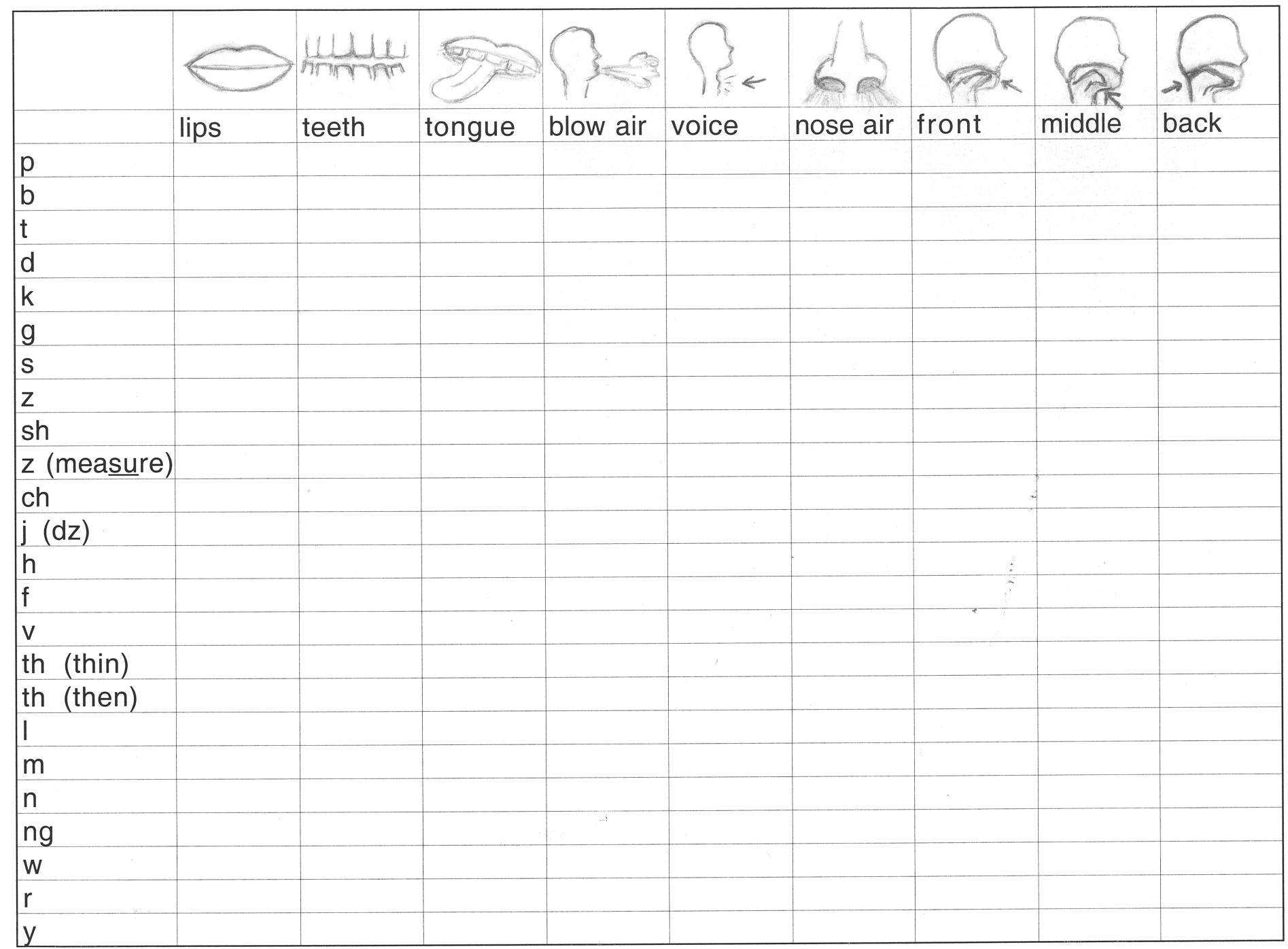Phonemes
Phonemes are units of speech sounds. Vowels and consonants are phonemes. This lesson examines how various phonemes are produced. Speech is normally produced by "shaping" air as we breathe out. This "shaping" can be produced by using the lips, tongue, teeth, soft palate, and/or larynx. The flow of air can be stopped completely for a short time to produce a "stop" consonant such as /t/ or /k/ or the flow of air may be merely be constricted ("pressed") as in /sh/ or /th/ (fricatives). The lowered soft palate (check out your uvula hanging in the back of your mouth) will open your nasal area to resonate in this system creating "nasal" consonants such as /m/ or /n/. Various positions of the tongue will cause sound to alter depending on where it is held, stopping or constricting the air in the front, middle or back of the mouth. Sounds may or may not be coupled with "voicing" which is produced by vibration of the vocal cords in the larynx. (Compare voiced /th/ (then) and voiceless /th/ (thin)). Put your fingertips on your larynx to check for the presence of vibration to determine whether a sound involves voicing. All vowels involve voicing and different tongue positions. Vowels carry the main sound of each syllable while consonants provide additional auditory information sort of "hung" on the vowel.
Now let’s examine how we produce various consonants:
While saying the consonant, feel what part of your mouth area you are using. Put your hand in front of your mouth. Feel if there is air blowing out. Hold tissue paper in front of your mouth. The paper will move when air is expelled. Feel your neck for laryngeal vibration. If you are using your tongue, is it in the front, back or middle of your mouth? Is it touching your teeth? Are your lips touching each other or your teeth? Is air coming out of your mouth or nose? Feel the side of your nose to see if you can feel any vibration. On the worksheet provided mark each feature that you think is present for production of each sound.
Here are some questions to think about:
What is the difference between /p/ and /b/ ? They are very similar. They are called cognates because they are essentially the same except for the voicing feature. Can you find some more cognate pairs?
Compare the cognate pairs. Which ones (voiceless/voiced, e.g., p/b ) produce more aspiration (expelled air)?
What is the difference between /d/ and /n/ ?
/CH/ is actually two phonemes. Which ones?
Hold your nose while speaking. Which sounds are affected?
If a child says "wabbit" for "rabbit" what is he doing wrong?
If a child says "fith" for "fish" what feature of the final phoneme is he doing correctly?
What about when a child says "tar" for "car"? What feature(s) of the initial sound does he have wrong and what does he have right?
Sounds produced by use of the lips are called "labials". What labial sounds did you find?
Sounds produced by use of the teeth are called "dentals". What dental sounds did you find?
Did you find any sounds where you use both your teeth and lip(s)? They are called "labiodentals".
What is happening when a child says "bitamin" for "vitamin"? What would you tell him to do differently?
If a person has difficulty hearing high-pitched sounds, which phoneme is he less likely to hear /s/ or /sh/?
